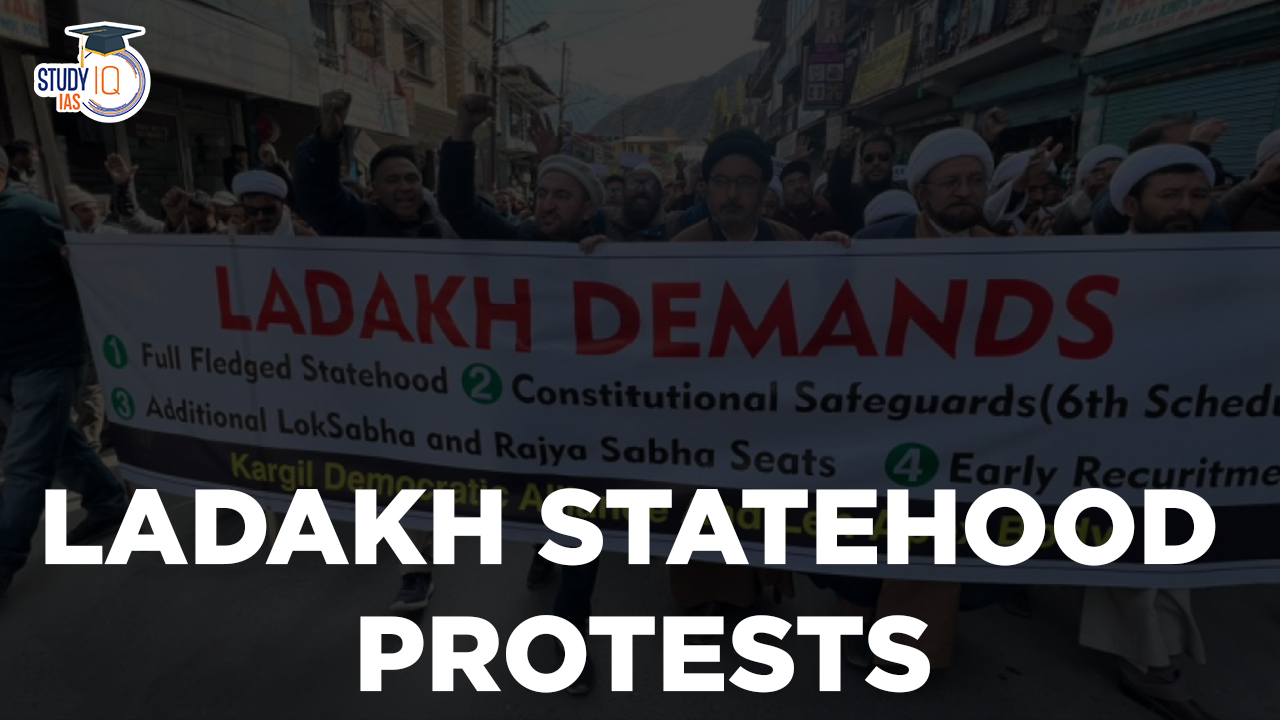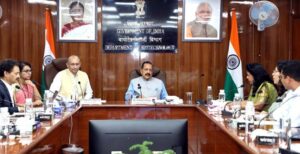Table of Contents
Ladakh demanding inclusion in Sixth Schedule
Recently Climate Activist Sonam Wangchuk has started a protest to support Ladakh’s demand for inclusion in 6 Schedule of the Constitution.
| Types of Federalism |
|
About Fifth & Sixth Schedule Areas
Fifth Schedule
- It includes regions with significant tribal populations.
- Declared by: President of India
- Currently, 10 states have scheduled areas under this schedule.
- Andhra Pradesh, Chhattisgarh, Gujarat, Himachal Pradesh, Jharkhand, Madhya Pradesh, Maharashtra, Odisha, Rajasthan and Telangana.
- Key features:
- Tribes Advisory Councils (TAC):
- Composition: Not more than 20 Members
- Functions: Advises the Governor on matters related to the welfare and advancement of Scheduled Tribes.
- The Governor regulates land allotment and transfer among STs and can modify laws applicable to these areas.
- Tribes Advisory Councils (TAC):
|
Criteria |
Criteria for declaring an area as a Scheduled Area: (Recommended by Dhebar Commission)
|
Sixth Schedule
- Article 244(2): Makes special arrangements for the administration of Tribal Areas in the States of Assam, Meghalaya, Mizoram and Tripura. (Trick -AMTM)
- Special Provisions under 6th Schedule:
- Creation of Autonomous district Councils which have Legislative, Judicial and Executive powers.
- District Councils are empowered to prepare a budget for their respective Council.
- The councils derive all their powers and functions directly from the Constitution.
- Acts passed by Parliament or state legislatures do not apply to autonomous districts and regions, or they apply with certain changes and exceptions.
- Each autonomous district has an Autonomous District Council (ADC).
- Membership: ADCs have up to 30 members
- 4 are nominated by the governor
- The remaining 26 are elected on the basis of adult franchise.
- Term: 5 years
- Membership: ADCs have up to 30 members
| Fact |
| According to a 2019 report from the National Commission for Scheduled Tribes (NCST), 97% of Ladakh’s population is tribal. |
Ladakh Statehood Protest
Thousands returned to Leh’s streets demanding full Statehood for Ladakh and inclusion in the Sixth Schedule to safeguard land, culture, language, and environment.
- Protests in Ladakh have been ongoing, with calls for constitutional safeguards.
- Local groups ABL and KDA seek job security, land rights, and cultural protection.
- They demand the inclusion of Ladakh under the Sixth Schedule of the Constitution.
Reasons Behind Ladakh Statehood Protest
- Origin of Protests: Protests in Ladakh began after its separation from Jammu and Kashmir and establishment as a Union Territory (UT) without a legislature in August 2019, following the dilution of Article 370.
- Local Concerns: The population of Ladakh are worried about the loss of identity, resources, and bureaucratic overreach. There’s fear that opening up the region to non-locals and industrialists would impact the demography and lead to a loss of distinct identity.
- Political Representation: Before the reorganisation, Ladakh had representation in the J&K Assembly. The current lack of political representation and a jobs crisis have contributed to the unrest.
- Demands of the Agitators: The Leh Apex Body and the Kargil Democratic Alliance, representing a wide range of community groups, demand a full-fledged legislature, constitutional safeguards under the Sixth Schedule, separate Lok Sabha seats for Leh and Kargil, and job reservations for locals.
- Constitutional Safeguards: The protestors seek special status under the Sixth Schedule to protect tribal populations and ensure local consultation on impactful decisions, noting that nearly 80% of Ladakh’s population are tribals.
- Employment Concerns: Since becoming a UT, Ladakh has not seen new gazetted job openings, leading to demands for a Public Service Commission in the region.
We’re now on WhatsApp. Click to Join
Article 371 Protections
Special Provisions for States
- Offers autonomy to religious and social groups within specified states.
- Allows these groups to manage their affairs independently of state and central interference.
General Provisions
- Article 371: Originated with the mandate to form “development boards” for certain areas in Maharashtra and Gujarat, assessing development needs and government spending.
Check here in Detail: Article 371 of Indian Constitution
Specific State Provisions
- Articles 371-B and C allow the creation of special committees in the Legislative Assemblies of Assam and Manipur. These committees comprise MLAs elected from tribal areas and Hill areas respectively.
- Special provisions have also been introduced to provide reservations in the Sikkim Legislative Assembly (Article 371-F), to protect “the rights and interests of the different sections of the population”.
- Notably, the special provisions for Nagaland, Manipur, Sikkim, Mizoram, Arunachal Pradesh (371-H), and Goa (371-J) were introduced shortly after each of these states was officially created.
Unique Application to Union Territories
- If applied to Ladakh, these provisions would represent the first extension of such special status to a Union Territory, contrasting with their typical application to states post-creation.
| Facts |
|
Potential Application to Ladakh
- The introduction of similar protections for Ladakh would be the first for a Union Territory.
- Aimed at ensuring local representation and up to 80% reservation in public employment.
Government Response
Union Home Minister’s Assurance
- He suggested extending Article 371-like protections, but not full Sixth Schedule autonomy.
- Assured representation and participation through local hill councils.
- Committed to safeguarding local interests in jobs, land, and cultural practices.
| UPSC FAQ |
How many of the above statements are correct?
Answer: B Statement 3 in Incorrect: The Governor of each State having Scheduled Areas therein shall annually, or whenever so required by the President, make a report to the President regarding the administration of the Scheduled Areas in that State |


 Bharat Bandh 9 July 2025: Over 25 Crore ...
Bharat Bandh 9 July 2025: Over 25 Crore ...
 Sukhoi Su-57: Will India Choose Russia�...
Sukhoi Su-57: Will India Choose Russia�...
 World Bioproduct Day 2025: Date, Theme, ...
World Bioproduct Day 2025: Date, Theme, ...





















